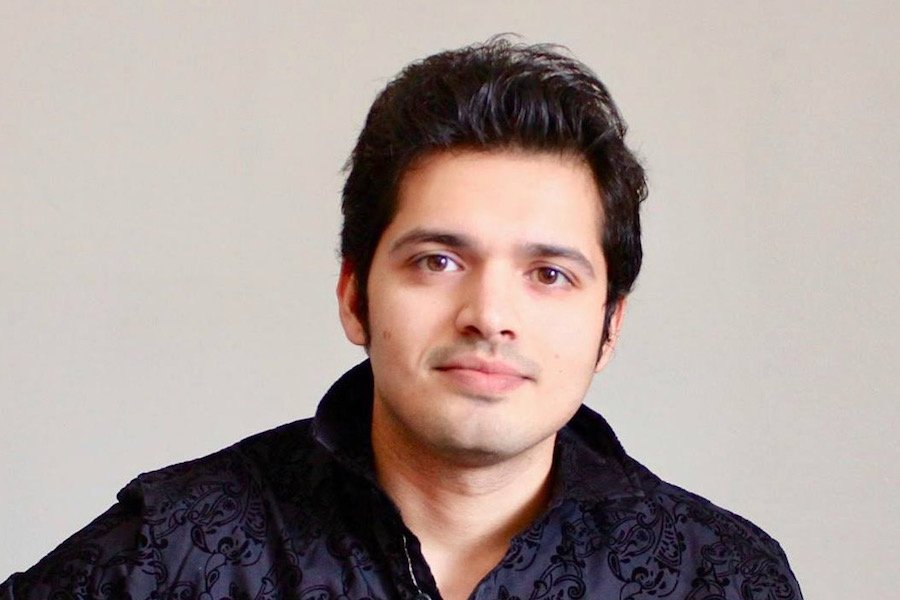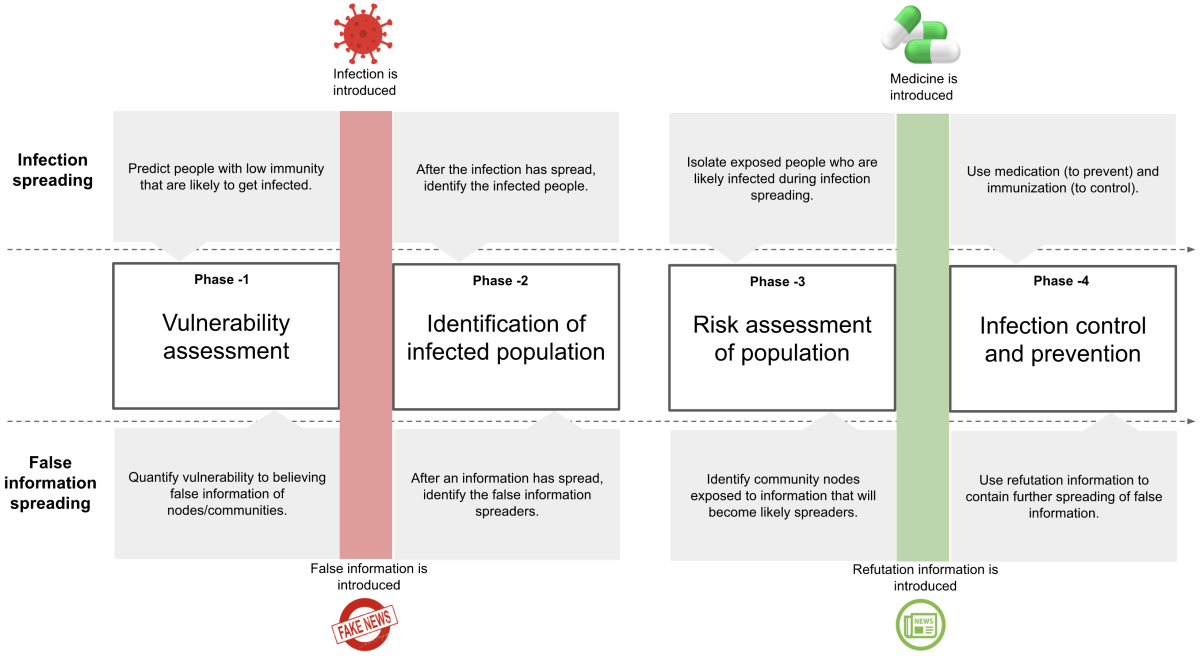An epidemiology-inspired model for fake news mitigation on social media

Photo credit: Bhavtosh Rath
CSE alumnus studies fake news through computing
June 8, 2021
Social networks like Facebook, Twitter, and WhatsApp are used by millions of people around the world to share information and personal opinions. While these platforms are a great way for people to stay connected, they have also led to the spreading of unverified, false information—popularly known as "fake news."
Over the last decade, computational models have emerged as a way to detect and prevent the spread of fake news. Recent College of Science and Engineering (CSE) graduate Bhavtosh Rath decided to take this idea one step further. In his Ph.D. dissertation—with Professor Jaideep Srivastava as his faculty advisor—Rath proposed a complementary model inspired by epidemiology, the study of the spread of diseases.
“The fact that the outcome of the 2016 presidential election was shaped by polarizing social media campaigns—that mostly relied on unverified claims—as well as ‘fake news’ being acknowledged as a major societal problem inspired my research on fake news mitigation,” said Rath, who now works for Target Corporation as a senior artificial intelligence scientist.
For the culmination of his doctoral studies in CSE's Department of Computer Science and Engineering, Rath developed a four-phased approach to identify people who were most likely to become fake news spreaders that was similar to models that could recognize people most likely to spread an infectious disease, like the flu or COVID-19. In his framework, false information was the disease; people on social media were the population, and the likelihood of someone believing an 'information endorser' was like the vulnerability to disease in an epidemiological model.
In Phase 1, which he calls the vulnerability assessment, Rath estimated how likely the online community would believe false information before it spreads widely. In Phase 2, he identified the likely spreaders of misinformation. In Phase 3, he assessed the online community's risk to misinformation, and in the final phase of his framework, Rath introduced "refutation information" or a way to debunk the fake claims.

With Srivastava 's help, Rath applied his framework in the real world by conducting experiments using actual information from Twitter—and it worked. He found that the spreading of false information is more sensitive to behavioral properties like trust and credibility than to the spreading of true information. His findings could serve as motivation for further research and even be applied to track other applications like cyberbullying, abuse detection, or viral marketing.
Rath has published four conference papers and two journal papers on his core thesis, as well as two additional journal articles in collaboration with the University of Minnesota's Hubbard School of Journalism and Mass Communication.
“While working on fake news mitigation research, I spent a lot of time gathering technical knowledge and learning how to formulate research problems," Rath said. "At Target, I have been able to apply both these skills to successfully build models for personalized recommendations for customers. Being able to work on applications that impact people’s regular lives has been a major motivation and continues to drive me.”
His dissertation, "An epidemiology-inspired model for false information mitigation in social networks" is available on the U of M Digital Conservancy website.
Story repurposed with permission from the Department of Computer Science and Engineering.
